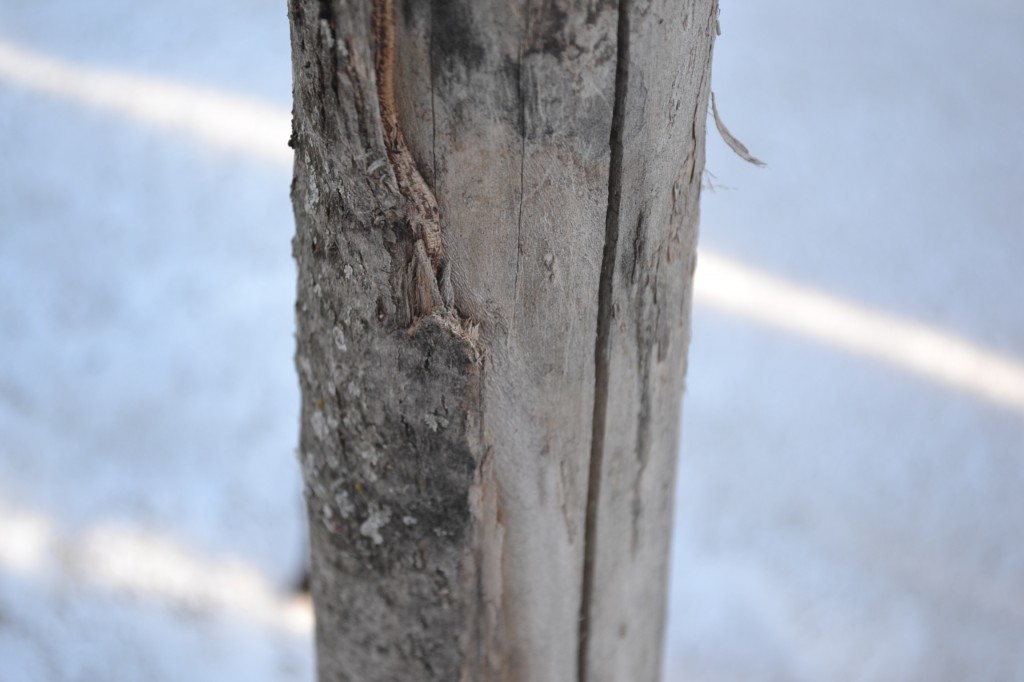Frost cracks on trees is the splitting of the bark caused by freezing and thawing. These cracks develop in the winter when the bark of the tree is frozen at night and thaws during a warming during the day. Night time temperatures will be below freezing and day time sun light may cause the temperature of the bark to heat up significantly causing sunscald. Once night-time temperatures set back in, the bark re-freezes and causes the inner layer to die out. You may notice large vertical gashes on the bark of the tree. These gashes usually appear in the spring when the tree starts to grow again. Since the bark is dead, it will continue to split and may peel back. You may notice large sections of bark peeling right off of the tree. Slight splitting of the bark is normal during the growth of young trees. Extensive splitting is usually caused by sunscald and frost cracks. Sunscald usually occurs on the south-west section of the tree. Since the sun is the hottest during mid afternoon, sun exposure at this time will be maximized.
Trees that may encounter frost cracks.
- Crabapple
- Linden
- Maple
- Oak
- Sycamore
- Walnut
If your tree gets sunscald or frost cracks, your tree will not necessarily die. A couple of the biggest things to watch out for are insect and fungus damage. Since the tree’s bark is damaged, it is now exposed to other damage possibilities. One of the best ways to prevent sunscald and frost cracks is to wrap your tree. Wrapping your tree with a tree wrap will help reflect the heat caused by the afternoon sun. Reflecting the sun will reduce the temperature of the bark. It is not recommended to apply tars or paints to the damaged areas as this may hamper the recovery of the tree.

